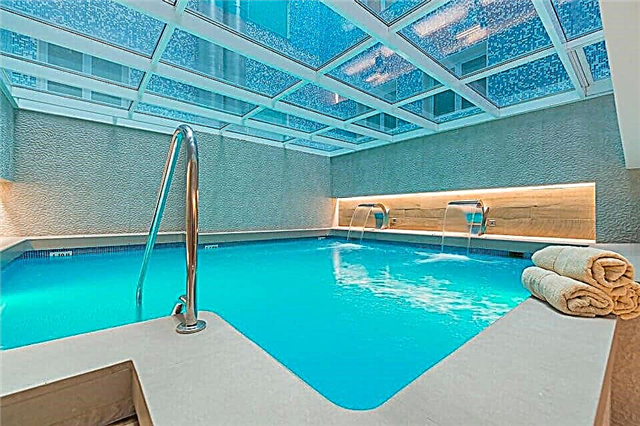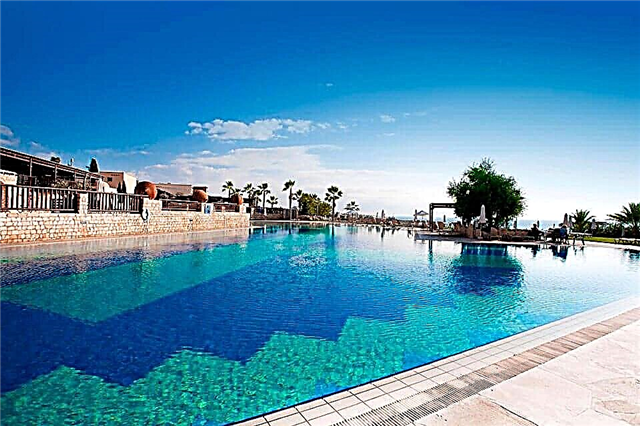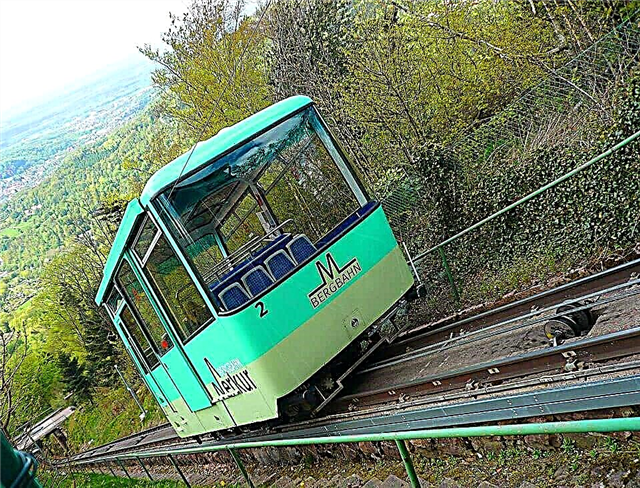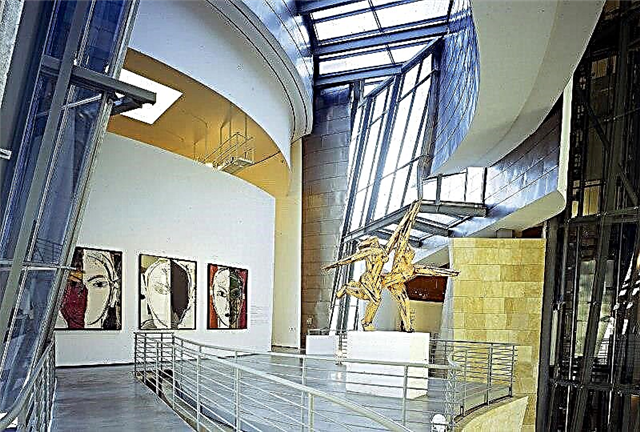Address: Germany, Berlin, Gendarmenmarkt square
Start of construction: 1780 year
Completion of construction: 1785 year
Architect: Martin Grunberg
Coordinates: 52 ° 30'45.9 "N 13 ° 23'33.3" E
Content:
Short description
Every year, hundreds of thousands of people go to the capital of Germany in order to personally see the numerous architectural monuments and historical sights that this country is rich in.
It is impossible to say unequivocally where in Berlin a tourist should first of all go after visiting the famous Brandenburg Gate, the Reichstag and Cologne Cathedral. But that, where you should definitely visit and what you should definitely see is the Gendarmenmarkt square and, located on it, the German Cathedral.

View of the cathedral from the observation deck of the French Cathedral
When visiting the famous Berlin square for the first time, a traveler may be somewhat confused when he sees in front of him two identical buildings facing each other: the German Cathedral and the French Cathedral. The point is that this is not an optical illusion, but the result of a large-scale reconstruction, which was carried out on a grand scale back in the distant 18th century. However, this article will focus on one of the majestic structures - the German Cathedral. It is also worth noting that the building owes its name "German Cathedral" to German parishioners, most of whom professed Calvinism and Lutheranism.
German Cathedral in Berlin - history
Continuing the conversation about the origin of the name, I would like to note that the German Cathedral in Berlin means a whole architectural complex, which consists of a German Church and a giant, amazing dome tower.

View of the north facade of the cathedral
At the beginning of the 18th century, namely in 1701, during the reign of King Frederick II of Prussia, under his strict guidance, the architect Martin Grünberg, as part of a large-scale transformation of the entire Gendarmenmarkt square, developed a project for the future church. To be fair, it should be noted that this building project was not the result of painstaking work of the architect Grünberg. It was based on the idea of Roman architects who developed a uniquely beautiful project of twin churches with majestic domes located in the well-known Italian Piazza de Popolo.
Having approved the project, Frederick II gave the order to clear the site, which previously housed the Swiss cemetery, where in 1698 and 1699 their relatives were buried, returning from temporary exile, the Huguenots. As a matter of fact, German cathedral was built on the remains of dead people... After all, hardly anyone was involved in the transfer of the cemetery to another place in those distant and turbulent times. Construction began in 1701 and lasted until 1708. Initially, the building had a pentagonal shape, the base of which was decorated with semicircular projections - apses.

Cathedral view at night
Inside, near the central column, opposite the entrance, a Protestant altar was installed, which, according to the laws of this religion, was combined with the pulpit. It should be noted that initially only Calvinists attended the church, which, in fact, Frederick II sought, wishing to create and expand a Calvinist congregation. However, after a certain time, Lutherans also began to attend the parish, so the New Church became both Calvinist and Lutheran. All this time, Giovanni Simonetti was in charge of the construction work.
Domed towers appeared almost at the end of the 18th century. In 1780, the German Cathedral underwent its first reconstruction. The reconstruction of the building was carried out by Georg Christian Unger, who implemented the project of the architect Karl von Gontard until 1785. The domed towers were created in the tradition of Palladianism, and outwardly "echoed" the towers in Paris, installed on the Church of Saint Geneva, which modern travelers know as the legendary Pantheon. The tower itself was decorated with statues of characters from the Bible, and its dome was crowned with the only sculpture that was supposed to symbolize military prowess.

Cathedral dome
It was decided to decorate the pediment of the building with a relief composition, the "plot" of which was also biblical - "The Conversion of the Apostle Paul." According to historical data, in 1817, a rethinking of doctrines took place, as a result of which many German Lutheran and Reform religious organizations moved into the single Evangelical Church of Prussia.
It is impossible not to mention the tragic event that happened in the spring of 1848. The March Revolution, in which many Berliners took part then, claimed the lives of hundreds of people of different faiths. At the same time, the largest memorial service was performed. Three representatives of different religions were engaged in the funeral service for the 183 murdered at once: a Catholic priest, a rabbi and an evangelical pastor. At that time, this event was just something from the realm of fantasy.
In 1881, the German Cathedral in Berlin underwent another transformation... The inexorable passage of time, as a result of which most of the church was destroyed, became the reason for a new reconstruction of the building. The company “Von der Hude & Hennicke” got down to business under the leadership of Hermann von der Hude and Julius Hennicke, who this time made new architectural elements in the neo-baroque style.

View of the cathedral from Marktrafenstrasse
The Second World War also made its own adjustments. 1943 was a fateful year for the existence of the German Cathedral. However, in fairness it is worth clarifying that many priceless monuments of architecture and history of Berlin suffered this year. The cathedral was completely destroyed as a result of the strongest bombing.
The restoration of the German Cathedral in Berlin was started only in 1977. The restoration work lasted more than a dozen years, but in 1988 the church was glad to welcome its parishioners again. But already in 1989, when the Berlin Wall fell, the cathedral was closed again, now the building and the land plot under it become the property of the government of the united country. After that, the German Cathedral in Berlin ceased to fulfill the functions assigned to it: Protestants, Lutherans and Calvinists no longer offered up their prayers to God in a magnificent building with a magnificent dome. The German government apparently decided that there were plenty of cathedrals in the capital, and issued a decree stating that the German Cathedral would be the most "ordinary" museum.
German Cathedral in Berlin - today
From 1996 to the present day, the German Cathedral in Berlin is a museum building, where everyone can get acquainted with the history of the German parliament and the Bundestag. All exhibits in it are of great historical value for every German. There is no doubt that they and the amazing interior of the building of the German Cathedral will interest almost all guests of the city.

Historical exhibitions with unique expositions dedicated to historical events that took place in Germany in the most diverse periods of time are also frequent in it. Getting to Gendarmenmarkt Square, where, in fact, the German Cathedral is located, is quite simple: there are two metro stations very close. In addition, you can use the services of a city bus or a taxi, by the way, drivers of private cars "love" the guests of the city very much, so such a trip can cost a traveler a pretty penny. But a visit to the German Cathedral itself will cost a tourist about 7 euros. You can get into the building any day of the week from 9 am to 7 pm.











